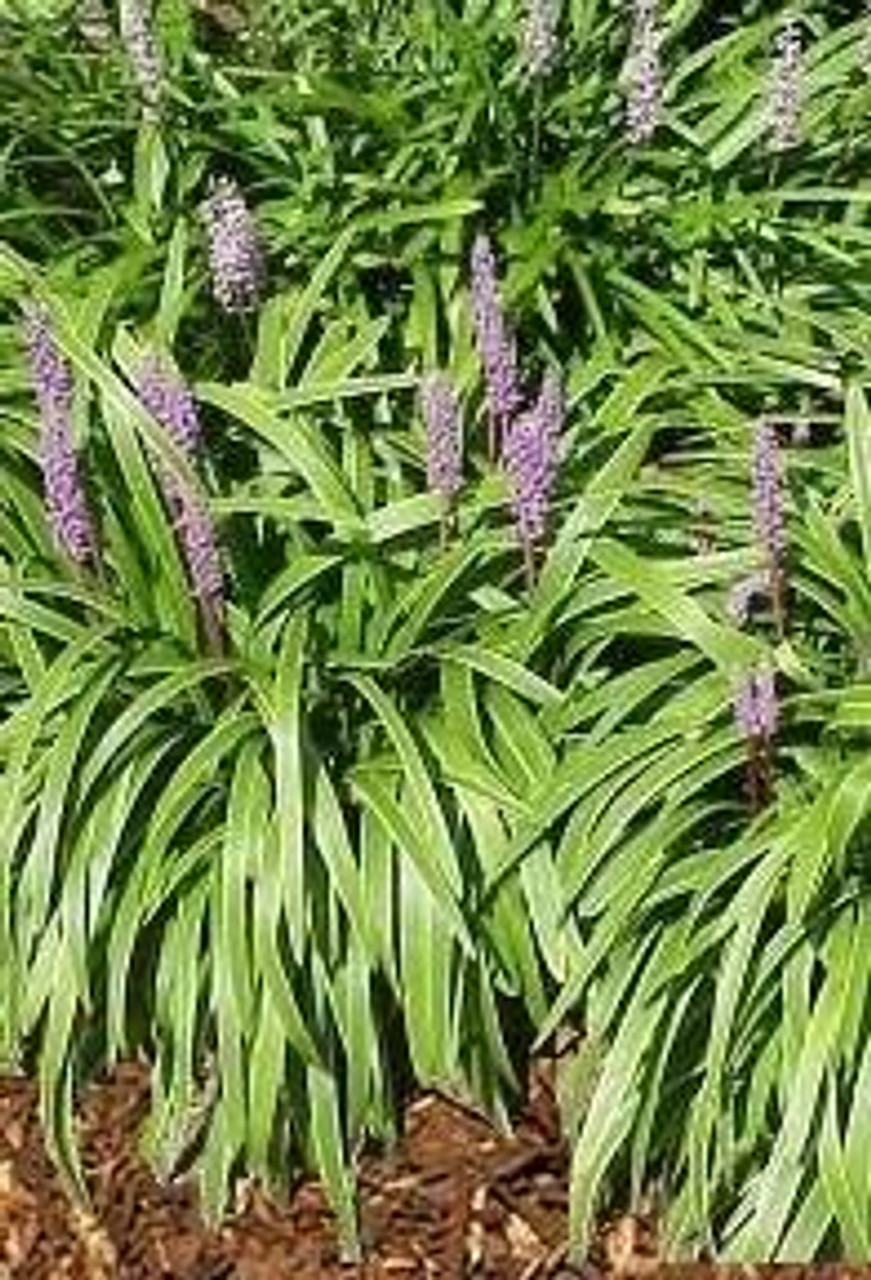Product Description
Liriope muscari 'John Burch' Bare Root Plants
John Burch Lily Turf
- Height: 12-15 Inches
- Spread: 12-18 Inches
- Hardiness Zone: 5/6-11
- Sun to Shade
- Evergreen - cut back late Winter
- Lavender cox-combed shaped flower spikes- Mid-Summer
- Stays in clump form - no rhizomes
- Good choice for borders and edging
- Also suitable for ground cover and mass planting
- Moderately salt tolerant
Liriope muscari 'John Burch' has, ½" wide, variegated leaf blades, green with yellowish-white margins. Blooms with full, lavender, cox-comb shaped, flower spikes mid-Summer. John Burch Liriope stays in clump form. It does not spread by rhizomes. Perfect for borders, edging and mixed beds. Also used for erosion control on banks, slopes, large bed plantings and in woodland gardens.
Liriope grass, also called lilyturf, border grass, or monkey grass, looks a lot like a grass, but actually is a member of the asparagus family, Asparagaceae,
Liriope tolerates a wide range of soils and soil conditions, though it doesn't like constantly wet or boggy soil.
During the first growing season, water the plants regularly, at least 1 inch of water per week. Once established, liriope plants are relatively drought-tolerant.
Liriope can be mow during the late winter or early spring before new growth begins.
Use liriope as a groundcover, an edging plant to mark pathways or borders, naturalize under large trees, and in mass plantings for erosion control. A dense mat of liriope can stabilize soil on slopes and ditch banks. Liriope is a low-maintenance plant that is drought and deer-resistant.
Liriope muscari 'John Burch' is indeed a great choice! It is a unique and attractive lilyturf with variegated foliage and interesting flower spikes. Bare root plants are a particularly economical way to introduce this lovely perennial to your garden.
Here is a summary of 'John Burch' and what makes it special:
- Variegated Foliage: The leaves have a vibrant green center with creamy-yellow margins, adding a bright touch to your landscape.
- Unique Flowers: The lavender flower spikes have a distinctive cockscomb shape, adding visual interest.
- Clump-forming Habit: It grows in neat clumps and does not spread aggressively, making it ideal for borders and edging.
- Adaptable: Thrives in a wide range of conditions, from full sun to shade.
- Low Maintenance: Once established, it is drought-tolerant and deer-resistant.
Important Considerations for Bare Root Plants
- Planting Time: Spring or fall is the best time to plant bare root Liriope.
- Rehydrate: When you receive your bare root plants, soak the roots in water for a few hours before planting to help them rehydrate.
- Planting Depth: Make sure to plant them at the same depth they were originally grown, with the crown (where the roots meet the stem) level with the soil surface.
- Watering: Water regularly after planting to keep the soil consistently moist but not soggy. Bare root plants need consistent moisture to establish themselves.
Other Details
The most important part of the plant is its root system. Healthy roots are the foundation of a healthy, vibrant plant. The type of plug container used is based on the specific needs of the plants. Perennials offered as bare root traditionally perform better when planted as bare root.Planted in a specialized mix, potted plants have well established root systems. Top growth stage will vary depending on the current life cycle and time of year when shipped. In Winter and early Spring dormant plants may be shipped. Dormant plants may be planted right away, even before the last frost date.
Most bare root varieties are field grown for at least one season, though Hemerocallis and Hosta are grown for two seasons. The bulk of the soil is removed during the harvesting process and the tops of most varieties are trimmed back to the crown. They are graded, packed in shredded aspen or sphagnum moss and stored in freezers until ready to be shipped.
See our Container Sizes and Bare Root Perennials pages for more information.
Plant information and care is provided in the Overview section, Plant Genus Page and general information is provided in the Planting Care & Guides. Additional questions can be asked on each Plant page.
Plant Spacing: Using the maximum mature spread or width of a plant to guide spacing, ensures space to grow to full size. To fill an area sooner, plant them closer together. Just remember, future thinning or transplanting may be needed.
Water: Keep a close eye on newly planted perennials, especially throughout the first growing year. Most early plant loss is due to too much or too little water!






